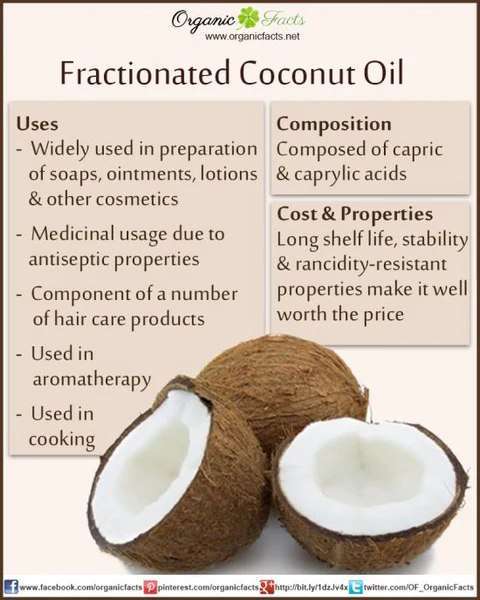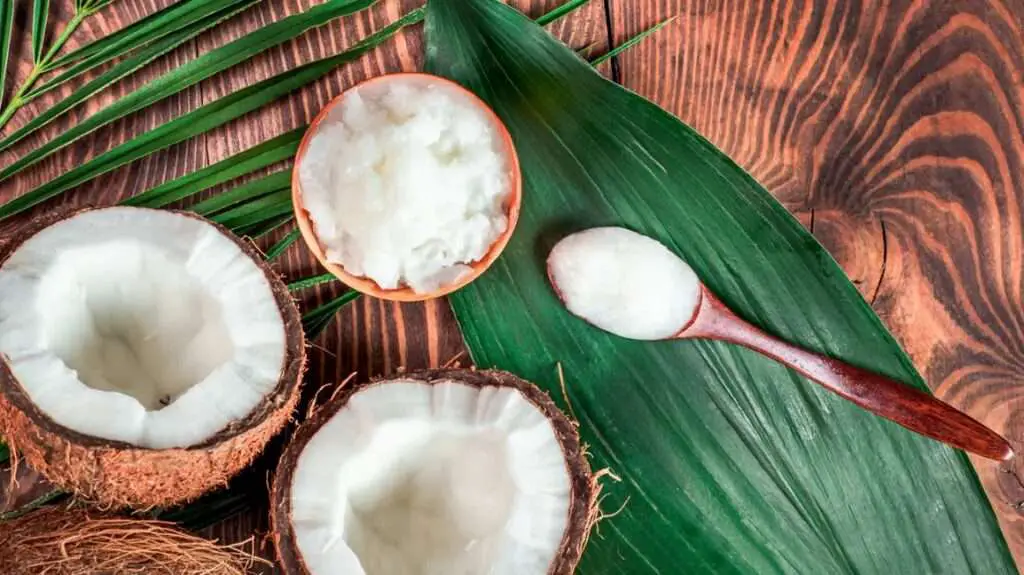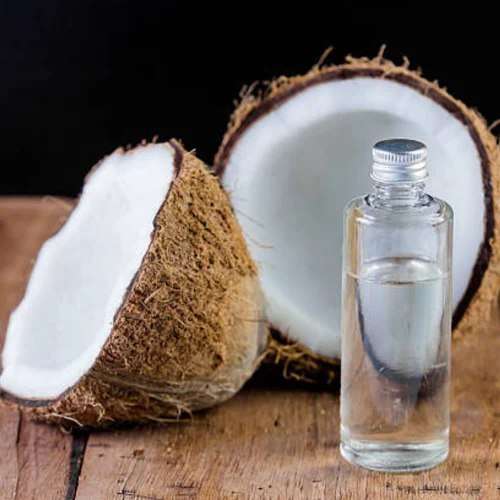Fractionated coconut oil is made by heating virgin coconut oil and separating the different triglycerides. This process, known as fractionation, mostly removes long-chain fatty acids.
How to Make Fractionated Coconut Oil? Exploring the health and beauty aisles, you’ll often come across fractionated coconut oil, revered for its numerous benefits and versatility. This specialized oil retains only the medium-chain triglycerides (MCTs), making it a saturated oil with a long shelf life and increased stability.
Its lightweight consistency and non-greasy texture make it a favorite in skincare, aromatherapy, and massage therapy. Unlike regular coconut oil, which is solid at room temperature, fractionated coconut oil remains liquid, blending well with essential oils and enhancing their applications. By opting for this form of coconut oil, consumers enjoy a product that offers rapid absorption, providing moisturization without clogging pores, thus making it ideal for a wide range of cosmetic and health-focused uses.
The Allure Of Fractionated Coconut Oil
Fractionated coconut oil whispers tales of beauty rituals and health elixirs. Its charm lies in the liquid luxury that pours effortlessly from the bottle, making it a prized possession in bathroom cabinets and vanities around the world. Unlike its solid counterpart, fractionated coconut oil offers a featherlight consistency that loves your skin and hair without hesitation.
Rising Popularity In Beauty And Health
The fascination with fractionated coconut oil is no mystery. Its benefits speak volumes:
- Long shelf life makes it a staple in skincare routines.
- Lightweight texture feels non-greasy on skin and hair.
- High concentration of medium-chain triglycerides (MCTs) targets wellness.
Wellness enthusiasts and beauty gurus hail its rise. They celebrate its versatile roles in moisturizers, hair conditioners, and even as a silky massage oil. From holistic health shops to high-end cosmetic lines, fractionated coconut oil claims its spot on the shelves, winning hearts with each use.
Key Differences From Regular Coconut Oil
Fractionated coconut oil differs from regular coconut oil in a few vital ways:
| Feature | Regular Coconut Oil | Fractionated Coconut Oil |
|---|---|---|
| State at Room Temperature | Typically solid | Always liquid |
| Saturation Level | Contains long-chain fatty acids | Mostly medium-chain triglycerides |
| Shelf-Life | May spoil sooner | Longer lasting |
Through a process called fractionation, fractionated coconut oil is heated, then cooled. This separates the oil into different fats. The result? A clear, odorless oil that stays liquid, making it perfect for many uses. Users savor its extended shelf life and its ability to absorb quickly into the skin without clogging pores.
Basics Of Fractionation
The Basics of Fractionation: A process refined, versatile, and innovative, fractionation breathes new life into coconut oil. This method enhances its utility in both our homes and industries. Understanding how to make fractionated coconut oil starts with grasping the basics of this process.
Science Behind The Process
At its core, fractionation is a form of purification. It separates the different types of fats found in coconut oil. Not just any separation, though—it’s based on melting points. The process involves gentle heating. This warmth causes the diverse fats to become liquid at various temperatures. By controlling the heat, we selectively remove certain fats while keeping others. It’s like sifting gold from sand, but with temperature as the tool.
What Fractionation Removes From Coconut Oil
- Fractionation targets long-chain fatty acids.
- It removes these heavier elements, making the oil lighter.
- Resulting in an oil that stays liquid, even at cooler temperatures.
- Lauric acid, a key component, is also reduced during the process.
By removing these specific components, the fractionated coconut oil also loses some natural characteristics.
| Fatty Acid | Presence Before | Presence After |
|---|---|---|
| Lauric Acid | High | Lowered |
| Long-Chain Fatty Acids | Moderate | Minimal |
The finished product is a versatile oil, ready for use in countless products and recipes. Fractionated coconut oil harnesses the best parts of its source while becoming more adaptable and shelf-stable.
Preparing For Diy Fractionation
Embarking on a DIY project to make fractionated coconut oil is exciting! It’s a process that strips down coconut oil to its most versatile form. Before diving in, it’s essential to gather the right materials and understand the necessary safety precautions.
Necessary Materials And Ingredients
To start, you’ll need the following items:
- Organic coconut oil – the base of your fractionation.
- A heat source – like a stove or hot plate.
- A double boiler or two pots to create one.
- A thermometer to monitor the oil temperature.
- Storage bottles – for your finished oil.
- A fine-mesh strainer or cheesecloth to filter the oil.
Safety Precautions
Safety comes first in any DIY project. Keep these points in mind:
| Precaution | Reason |
|---|---|
| Wear gloves | To protect your hands from hot oil. |
| Eye protection | To guard against splashes. |
| Well-ventilated area | Essential for safe breathing. |
| Keep a fire extinguisher nearby | In case of an oil fire. |
| Never leave the oil unattended | Prevents accidents and fires. |
Ready your workspace by clearing clutter and setting up near a water source. With materials and safety tips in check, you’re poised to create a pure, useful product: your very own fractionated coconut oil.

Step-by-step Fractionation
Welcome to a fascinating journey into the world of oils. Discover how to make fractionated coconut oil at home. Embrace a simple method that unlocks the numerous benefits of coconut oil in a stable, long-lasting form.
Ready to transform coconut oil into its most versatile version? Follow these steps:
Heating The Coconut Oil
Melt the magic. Begin by gently heating solid coconut oil. Choose a double boiler for an even, controlled heat source.
- Set the temperature to medium: Around 45°C (113°F) should suffice.
- Keep it steady: Consistent heat is key for a smooth transition from solid to liquid.
Separation Of Different Fats
After melting, separate the long-chain fats from the medium-chain triglycerides (MCTs). This step demands precision.
- As the coconut oil heats, long-chain fats remain solid longer.
- Skim these solids off to isolate the desired MCTs.
Cooling And Filtration
The oil now holds mostly MCTs. Next, cool and filter to achieve the final product:
| Step | Action |
|---|---|
| Cooling | Allow oil to cool at room temperature. |
| Filtration | Pass oil through a fine mesh strainer or cheesecloth. |
Once filtered, fractionated coconut oil is ready. Use it for personal care or numerous health applications. Enjoy its liquid form at room temperature and extended shelf life.

Quality And Storage
When creating fractionated coconut oil, quality and storage are vital. This oil is a popular choice for many cosmetic applications due to its long shelf life and stability. Ensuring top-notch quality and proper storage will give the best results for both personal and commercial use. Let’s delve into the specifics.Assessing the Quality of Your Product
Assessing The Quality Of Your Product
The journey begins with assessing the quality of your fractionated coconut oil. Pure, high-quality oil is clear and odorless. It should also be free from any sediment or discoloration. A consistent liquid form, even in cooler temperatures, indicates a well-made product.
- Color should be clear or slightly yellow.
- No detectable scent is a sign of purity.
- Oil should remain liquid and not solidify.
Test a small sample on your skin; the oil should absorb quickly without leaving a greasy residue. A patch test ensures no adverse reactions occur, thereby confirming its quality for personal care. Best Practices for Storing Fractionated Coconut Oil
Best Practices For Storing Fractionated Coconut Oil
Once you have confirmed the quality, focus on storage. Correct storage will extend the life of your fractionated coconut oil and maintain its benefits.
| Storage Tip | Benefit |
|---|---|
| Keep in a cool, dark place. | Prevents oxidation and extends shelf life. |
| Avoid direct sunlight. | Protects against the oil’s breakdown. |
| Use airtight containers. | Keeps contaminants out and maintains purity. |
Storing oil in smaller batches can prevent oxidation from frequent air exposure. Always ensure your hands and tools are clean when handling the oil to prevent contamination.
Uses Of Homemade Fractionated Coconut Oil
Homemade fractionated coconut oil is a versatile carrier oil for essential oils. Crafting it at home provides a lightweight moisturizer ideal for skincare routines and haircare applications.
Pioneers of DIY beauty and wellness embrace the versatility of homemade fractionated coconut oil. This oil has a feather-light consistency, making it perfect for multiple uses. Notably, it absorbs quickly and won’t clog pores. Let’s explore the remarkable ways to incorporate this oil into daily regimes. Skincare Routines
In Skincare Routines
Fractionated coconut oil rejuvenates the skin. Its lightweight texture penetrates deep to moisturize without leaving a greasy residue. Here’s why it shines in skincare:
- Moisturizer: Apply directly to soften and hydrate the skin.
- Makeup Remover: Effortlessly dissolves even waterproof makeup.
- After Sun Care: Calms the skin post-sun exposure.
As a Carrier Oil
As A Carrier Oil For Essential Oils
Homemade fractionated coconut oil excels as a carrier oil. It helps to dilute essential oils for safe skin application. Its stable nature preserves the benefits of essential oils over time. Personalize aromatherapy blends with these steps:
| Essential Oil | Benefit | Blend Ratio |
|---|---|---|
| Lavender | Relaxation | 1:10 |
| Peppermint | Energy Boost | 1:10 |
| Tea Tree | Skin Healing | 1:10 |
Homemade Hair Treatments

In Homemade Hair Treatments
Nourish hair and scalp with this multipurpose oil. Fractionated coconut oil combats frizz and promotes hair growth. Include it in hair care recipes for lustrous locks:
- Mix with rosemary essential oil for a stimulating scalp massage.
- Blend with honey for a deep-conditioning treatment.
- Combine with aloe vera for a hydrating hair mask.
Frequently Asked Questions For How To Make Fractionated Coconut Oil?
What Is Fractionated Coconut Oil?
Fractionated coconut oil is a form of coconut oil that has had its long-chain fatty acids removed via hydrolysis and steam distillation. This process makes it a saturated oil with a longer shelf life and enhanced stability, keeping it liquid at room temperature.
How Do You Fractionate Coconut Oil At Home?
To fractionate coconut oil at home, heat the oil until it’s completely melted. Then, let it cool slightly and maintain a warm temperature. The solid fats will separate and settle at the bottom. Decant the liquid oil, which is the fractionated coconut oil, leaving the solids behind.
What Are The Benefits Of Using Fractionated Coconut Oil?
Fractionated coconut oil has several benefits including its lightweight texture, non-greasy feel, and ability to absorb quickly into the skin. It is also highly stable, has a long shelf life, and is perfect for use in cosmetics and as a carrier oil for essential oils.
Is Fractionated Coconut Oil The Same As Regular Coconut Oil?
No, fractionated coconut oil differs from regular coconut oil. It has been processed to remove the long-chain fatty acids, making it remain liquid at low temperatures, whereas regular coconut oil contains these fatty acids and solidifies below 76°F (24°C).
Conclusion
Crafting your own fractionated coconut oil is a rewarding endeavor. It’s simple, cost-effective, and ensures a pure product. Embrace this DIY project and revel in the multitude of uses your homemade oil offers. Start your journey to self-sufficiency and natural living with this easy-to-follow guide.
Happy oil-making!

